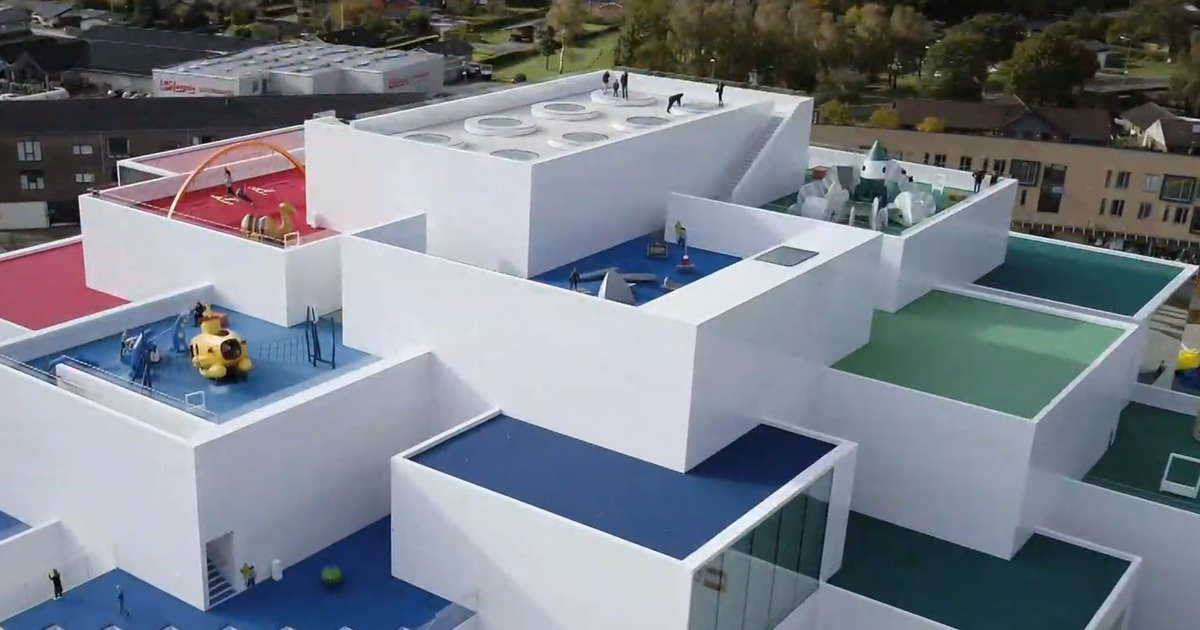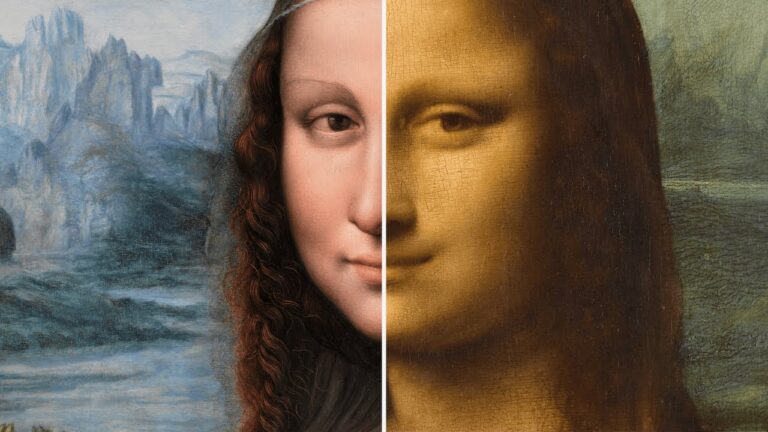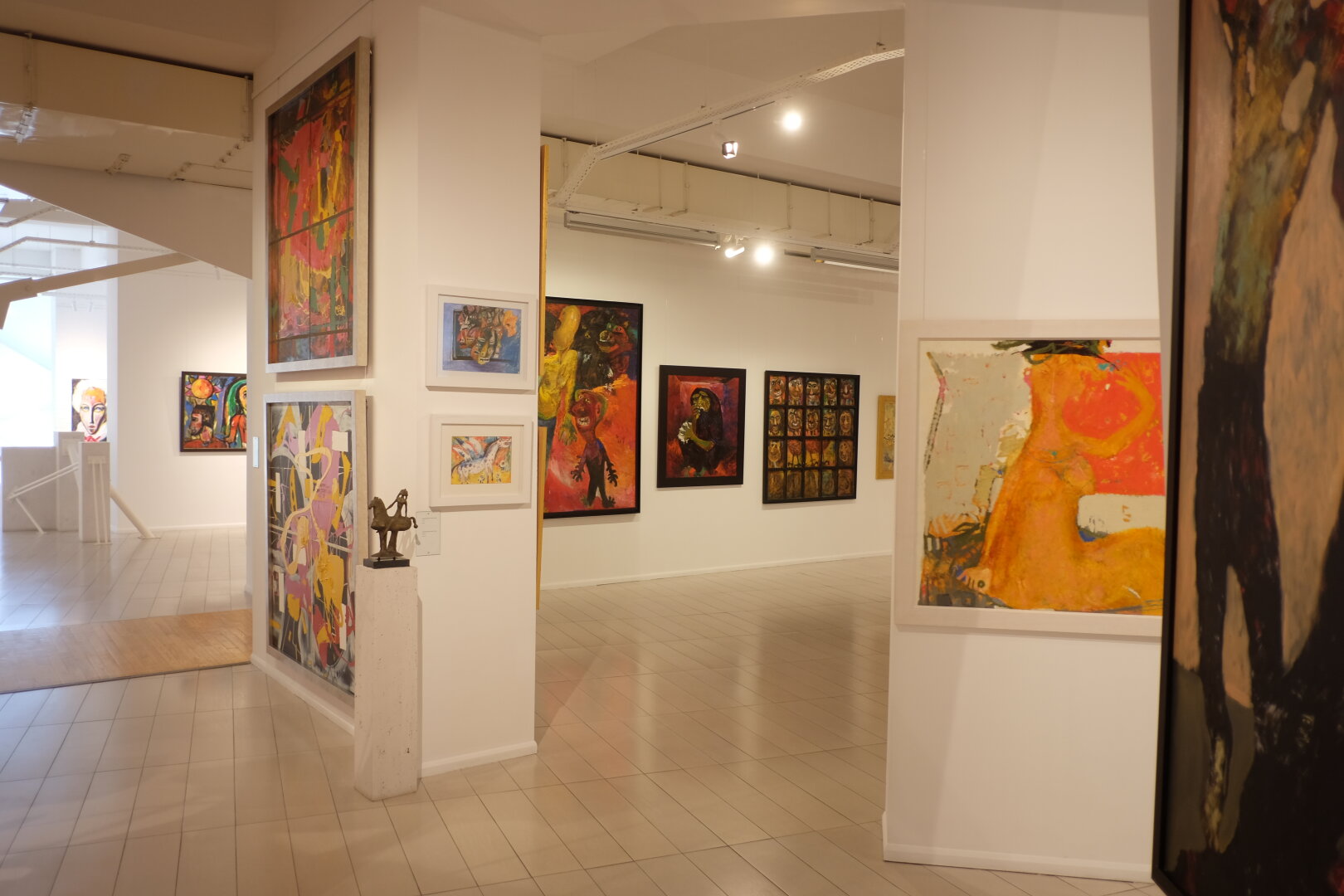Anyone for a quick breakfast before heading to the museum?
Behold... Japan's rather clever Folded Breakfast Sandwiches! #globalmuseum #museum, #food #breakfast
The Tokyo National Museum and the Dino-A-Live show have partnered for a traditional storytelling performance with animatronic dinosaurs reimagined as folklore spirits back from the dead. https://www.japantimes.co.jp/culture/2025/12/26/stage/unique-tokyo-experiences-show-dinosaurs/?utm_medium=Social&utm_source=mastodon #culture #stage #dinosaurs #dinoalive #museum #tokyonationalmuseum #performance
Rare look inside the secret Lego Museum
https://www.cbsnews.com/news/lego-secret-museum-denmark-headquarters/
#HackerNews #Lego #Museum #Secret #Rare #Look #Inside #Denmark
🎨🖼️ #Research from the #Prado #Museum suggests their version of the #MonaLisa was painted concurrently with Leonardo's original, possibly by one of his students. The 2012 restoration uncovered the #painting's original vibrant colors and details that the #Louvre version has lost over five centuries.
👉 https://www.openculture.com/2025/12/see-what-the-original-mona-lisa-likely-looked-like.html
Les Bergers d'Arcadie - Poussin, Nicolas #painting #paint #art #mastodonart #mastoart #gallery #artist #OilPainting #traditionalart #museum #traditionalart
Warum sollten kontrollierte Vokabulare FAIR sein? Und was genau macht sie FAIR?
Damit hat sich eine Gruppe der AG Minimaldatensatz beschäftigt.
Herausgekommen ist ein Report, in dem ausgewählte Vokabulare auf ihre FAIRness hin überprüft wurden.
Der Report bietet somit Orientierung im Vokabular-Dschungel und sensibilisiert dafür, was FAIRness konkret bedeutet.
@museum
#Normdaten #FAIRdata #museum #Sammlung
From: @nfdi4objects
https://nfdi.social/@nfdi4objects/115734011169381942
Prostanthera Melissifolia from Volume 2, 1873-6, Educational collections of Australian plants
Botanical specimen mounted on paper with label "Prostanthera melissifolia / Order Labiatae / Locality Gellibrand River / Contributor C. Walter".
Ink, Paper, Plant material - non specific
Melbourne, Victoria, Australia
https://collectionsearch.nma.gov.au/s/hw/EMU.EMUIRN/112557
--
#Art #History #Museum #ArtHistory #Gallery #MastodonArt #MastoArt #Culture #Random #Australia
Baku Museum of Modern Arts, or how to make use of all the walls everywhere.
#travel #travelphotography #streetphotography #walkingaround #fujifilmxe2 #museum #museums #museumroaming #baku #azerbaijan
Warum sollten kontrollierte Vokabulare FAIR sein? Und was genau macht sie FAIR?
Damit hat sich eine Gruppe der AG Minimaldatensatz beschäftigt.
Herausgekommen ist ein Report, in dem ausgewählte Vokabulare auf ihre FAIRness hin überprüft wurden.
Der Report bietet somit Orientierung im Vokabular-Dschungel und sensibilisiert dafür, was FAIRness konkret bedeutet.
@museum
#Normdaten #FAIRdata #museum #Sammlung
From: @nfdi4objects
https://nfdi.social/@nfdi4objects/115734011169381942
Baku Museum of Modern Arts, or how to make use of all the walls everywhere.
#travel #travelphotography #streetphotography #walkingaround #fujifilmxe2 #museum #museums #museumroaming #baku #azerbaijan
Prostanthera Melissifolia from Volume 2, 1873-6, Educational collections of Australian plants
Botanical specimen mounted on paper with label "Prostanthera melissifolia / Order Labiatae / Locality Gellibrand River / Contributor C. Walter".
Ink, Paper, Plant material - non specific
Melbourne, Victoria, Australia
https://collectionsearch.nma.gov.au/s/hw/EMU.EMUIRN/112557
--
#Art #History #Museum #ArtHistory #Gallery #MastodonArt #MastoArt #Culture #Random #Australia
Louvre Security Cameras Captured Heist—But Guards Weren’t Watching.
An ongoing investigation revealed critical errors in the museum's security response, including directing police to the wrong side of the building.
https://news.artnet.com/art-world/louvre-security-cameras-captured-heist-but-guards-werent-watching-2727603 #globalmuseum #museum #Louvre
Demenz-Forschungsprojekt Artemis: Kunst, die Erinnerungen öffnet
Das Städel Museum in Frankfurt am Main hat eine neuartige Kunst-App für Menschen mit Demenz entwickelt - mit Erfolg. Die begleitende Forschung zeigt: Kunst kann die Lebensqualität für Demenz-Erkrankte spürbar verbessern. Von Natascha Pflaumbaum
We’re going to be putting a fossil tortoise on exhibit next year, and I needed to know what to call it on the label. After 3 days, reading 5 technical papers, and spending several hours discussing the problem with 4 other paleontologists at my museum, I can finally confidently say … that we know what question we need to ask to get at an answer.
Demenz-Forschungsprojekt Artemis: Kunst, die Erinnerungen öffnet
Das Städel Museum in Frankfurt am Main hat eine neuartige Kunst-App für Menschen mit Demenz entwickelt - mit Erfolg. Die begleitende Forschung zeigt: Kunst kann die Lebensqualität für Demenz-Erkrankte spürbar verbessern. Von Natascha Pflaumbaum
Schwules Museum Berlin feiert 40-jähriges Bestehen
Weltweit einzigartig: Vor 40 Jahren wurde in Berlin das Schwule Museum gegründet. Es richtet sich an alle, die etwas über Sexualität und Identität lernen wollen. Eine Ausstellung widmet sich nun den Anfängen. Von Tomas Fitzel
Les Bergers d'Arcadie - Poussin, Nicolas #painting #paint #art #mastodonart #mastoart #gallery #artist #OilPainting #traditionalart #museum #traditionalart
🎨🖼️ #Research from the #Prado #Museum suggests their version of the #MonaLisa was painted concurrently with Leonardo's original, possibly by one of his students. The 2012 restoration uncovered the #painting's original vibrant colors and details that the #Louvre version has lost over five centuries.
👉 https://www.openculture.com/2025/12/see-what-the-original-mona-lisa-likely-looked-like.html
We're so glad to hear the WebSocialBR was a hit! 🇧🇷
A huge thanks to everyone who got involved and made it happen.
We're also super excited that our partnership with Ibram-Museus to build a "Museums in the Fediverse" app was announced 🎉
Huge thanks to @josemurilo for introducing our work to WebSocialBR and for putting your presentation into such an amazing blog post👇
#SocialWeb #WebSocialBR #Fediverse #Mastodon #SocialMedia #Brazil #Museum







